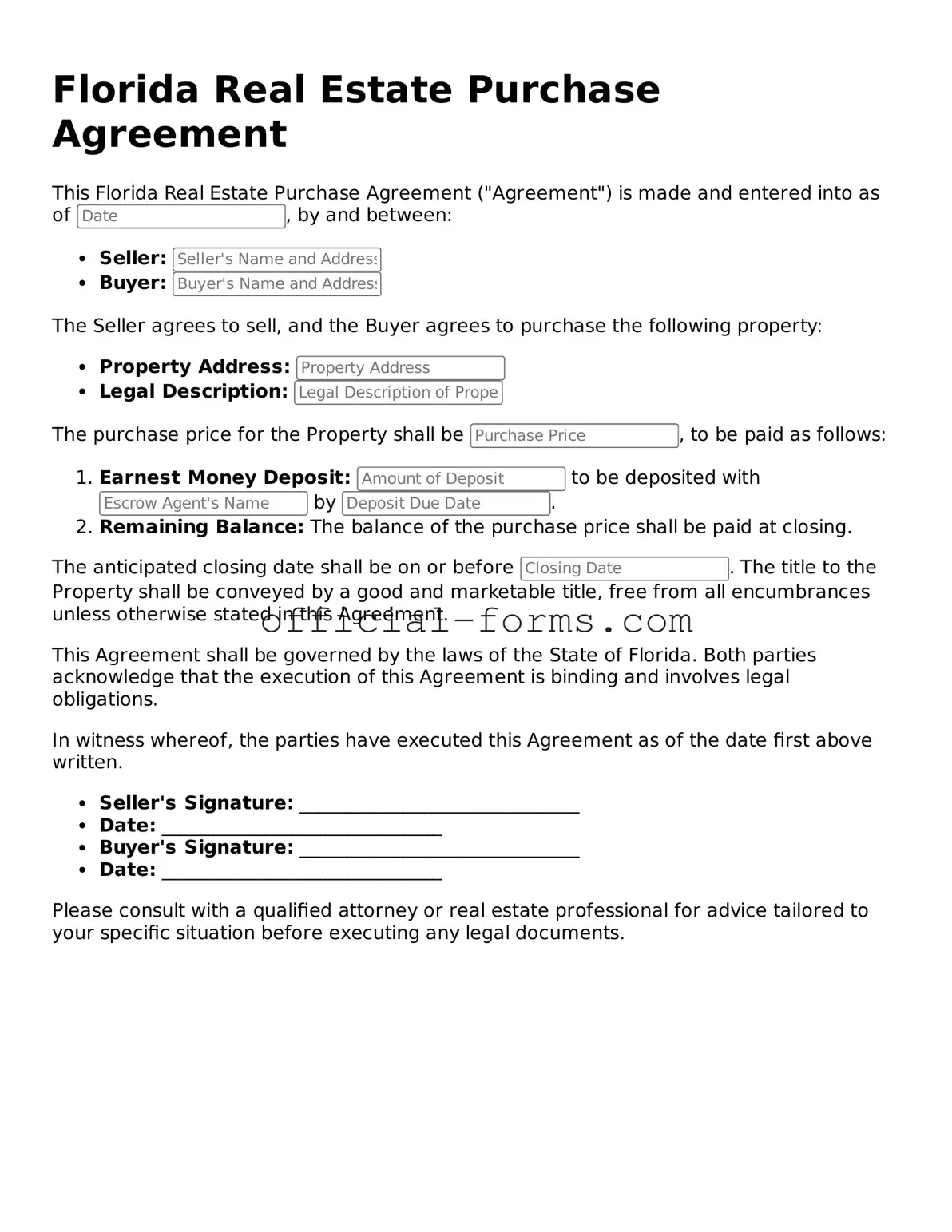Filling out the Florida Real Estate Purchase Agreement form can be complex, and errors can lead to significant issues. One common mistake is failing to provide accurate property descriptions. Buyers and sellers must ensure that the property’s legal description is complete and matches public records. Incomplete or incorrect descriptions can create confusion and disputes later.
Another frequent error is neglecting to specify the purchase price clearly. The price should be stated in both numeric and written form to avoid misunderstandings. If the price is ambiguous, it could lead to disagreements between the parties involved.
Many individuals also overlook the importance of including all necessary contingencies. Common contingencies include financing, inspections, and appraisals. Without these, buyers may find themselves committed to a purchase that they cannot afford or that does not meet their expectations.
Additionally, failing to sign and date the agreement correctly is a common oversight. Each party must sign the document for it to be legally binding. Missing signatures can render the agreement invalid, leading to potential legal complications.
Another mistake is not specifying the closing date. The closing date should be clearly outlined in the agreement. If not, it may lead to delays and frustration for both parties as they navigate the closing process.
Buyers sometimes fail to conduct due diligence before signing the agreement. This includes researching the property’s history, title, and any existing liens. Skipping this step can result in unexpected issues after the purchase is complete.
Inaccurate information about earnest money deposits is another common error. The amount of the deposit should be clearly stated, along with the terms regarding its return or forfeiture. Misunderstandings about the deposit can lead to disputes if the deal falls through.
Some individuals neglect to include the correct legal names of the parties involved. Using nicknames or abbreviations can create confusion and complicate the legal process. Full legal names should be used to ensure clarity and accuracy.
Another mistake involves not addressing the allocation of closing costs. The agreement should specify who is responsible for which costs, including title insurance and transfer taxes. This clarity helps prevent disputes at closing.
Lastly, failing to consult with a real estate professional or attorney can lead to errors. Many people attempt to fill out the form without understanding the implications of their choices. Professional guidance can help ensure that the agreement is completed accurately and protects the interests of all parties involved.
